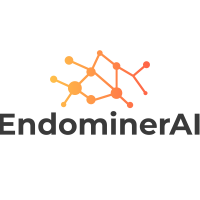EndominerAI
NLP for surveillance scan scheduling.
Modality:
Endoscopy, EPR
Pathology:
Premalignant disease of the upper gastrointestinal tract
Status:
Current

CSC Lead: Agathe
The COVID pandemic had lengthened the waiting lists for endoscopic surveillance for premalignant disease such that some patients may develop malignancy whilst waiting for endoscopy. Similarly, by booking follow-up endoscopy too early for patients, scarce healthcare resources are being used inappropriately. This risk could be offset by a rigorous guideline based assessment of patients on the waiting list for assessment so that patients who have been planned to be endoscoped too early, or inappropriately, can be planned more appropriately. To do this endoscopy and pathology free text reports need to be analysed for patients on the waiting list. The decision about the timing of follow-up endoscopy depends on the natural language information contained within both sets of reports. Because of the number of patients, the aim of the current study is to automate the analysis using natural language processing.
This project led to the creation and clinical deployment of the first of the set of models within EndominerAI suite. The accuracy of the developed tool has been consistently demonstrated to be around 98%, tested on GSTT, KCH and Birmingham data. The project is currently awaiting integration with the EHR system.
Clinical lead: Sebastian Zeki
Rationale
Patients with premalignant disease of the upper gastrointestinal tract need to undergo regular endoscopic surveillance to prevent malignancy. The timing of endoscopic procedures is often inaccurate and many patients are either surveyed endoscopically late or inappropriately which becomes a healthcare resource burden. Using natural language processing to automatically calculate follow-up timings based on information in the EPR system
Patient pathway
The model will interpret endoscopy notes to determine the most appropriate follow-up booking date. The practical output would be a spreadsheet containing the endoscopy and associated pathology report along with the extracted information of interest and a suggested follow-up timing. In the first instance the spreadsheet would be passed to a manual vetter as a final check on the output prior to bookings being made
Training data
Endoscopy and Pathology reports from EPR. Synthetic dataset used to date for proof of concept.
Risks
Patient may be given inappropriately early/late follow-up exam
Goals
Optimise available endoscopy resources by refining booking process for patient follow-up exams
Success criteria
- Reduction in the number of endoscopies done inappropriately early.
- Reduction in the number of endoscopies performed too late (?with decrease in missed early cancer rate).
- Reduction in patients lost to follow-up.
Alternatives
None identified.